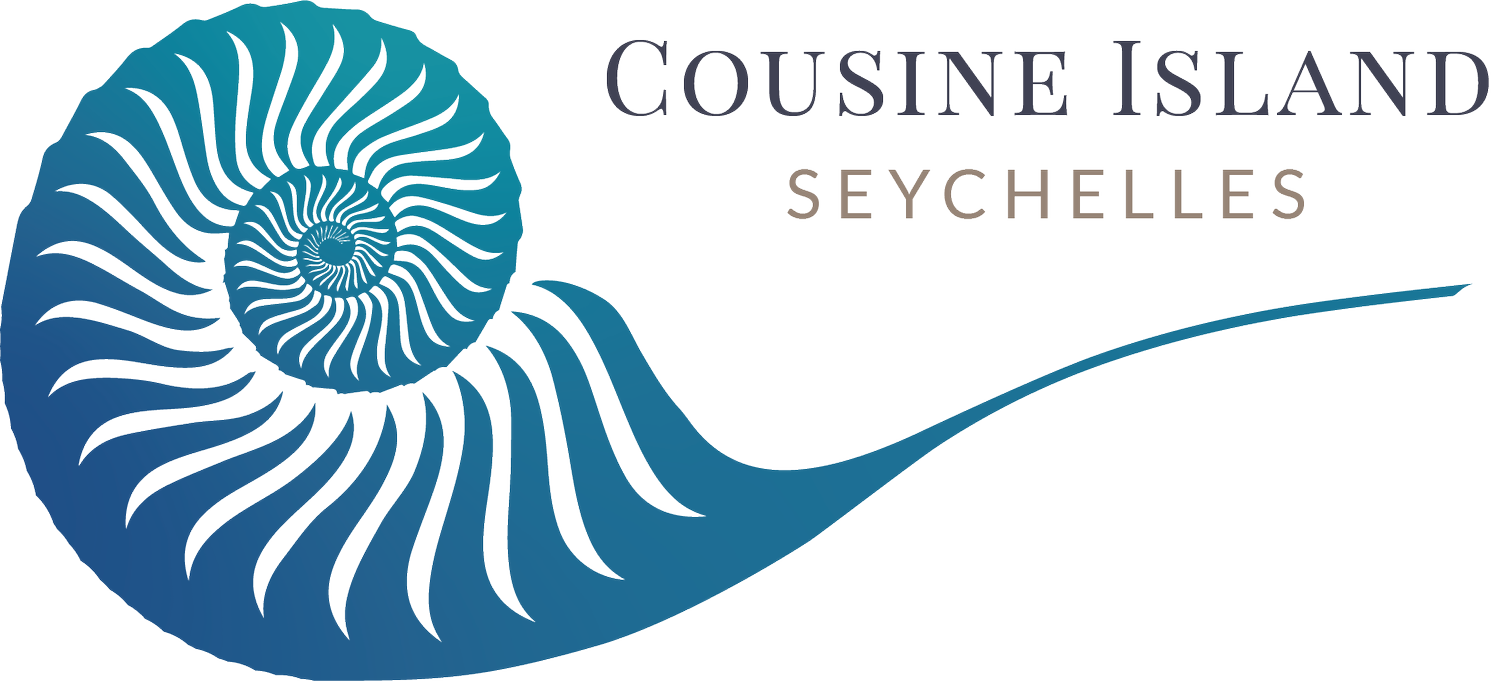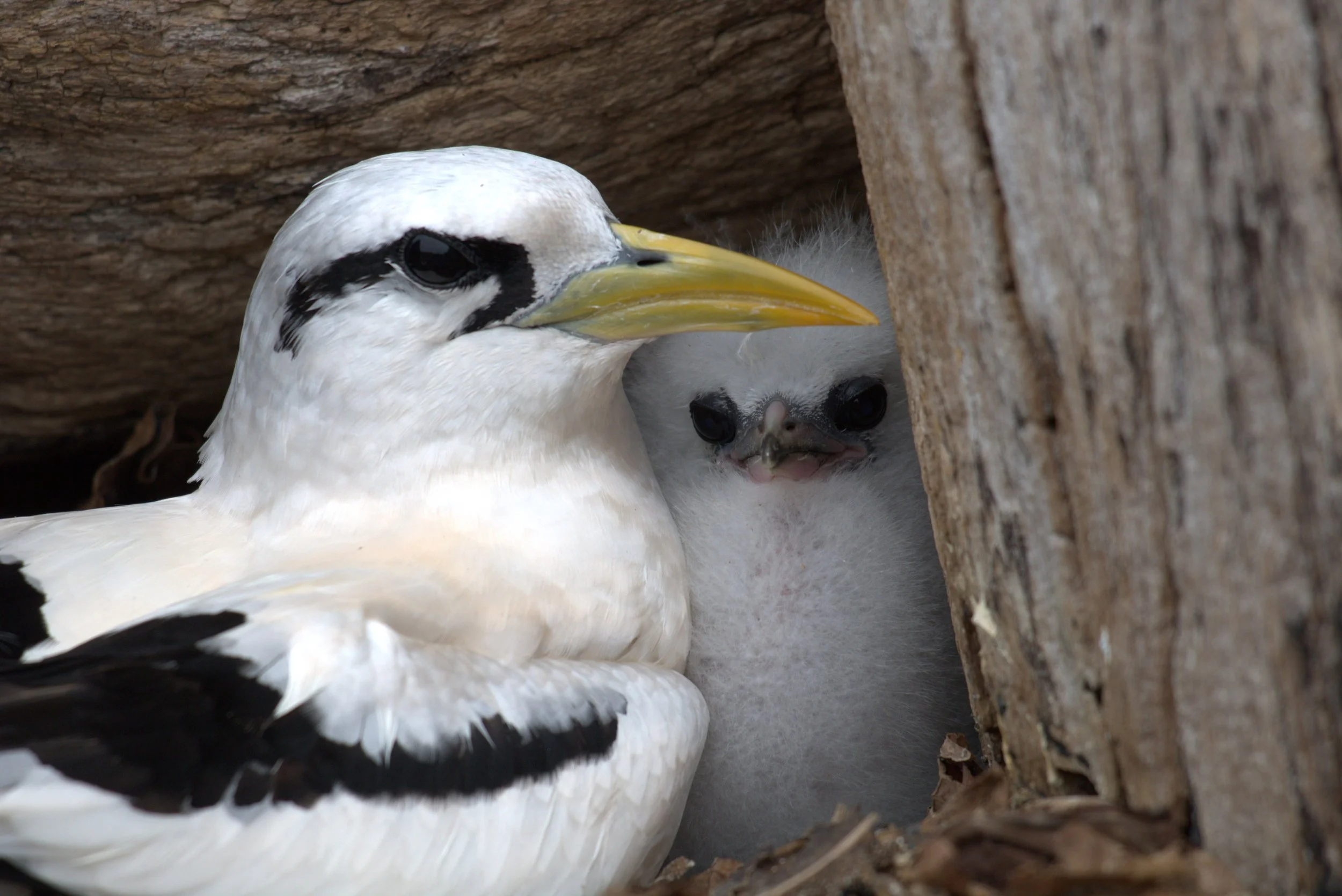Seabirds of October: Fairy Terns & White-Tailed Tropicbirds in Their Element
Nesting Season on a Protected Island
October on Cousine Island brings greater visibility and activity among the Fairy Terns and White-tailed Tropicbirds that live and breed here year-round, making their nesting behaviours more easily observed during this period of calmer conditions.
Their presence is not incidental; they select Cousine precisely because its habitat remains controlled, predator-free and lightly inhabited. With only a small number of guests on the island at any given time and no public access, the birds continue their full breeding cycle without the disruptions typically caused by human proximity.
Fairy Terns are among the most distinctive breeders on the island.
They typically lay a single egg on an open tree branch rather than in a structured nest, a strategy viable only in exceptionally safe environments.
White-tailed Tropicbirds on Cousine nest primarily on the ground.
This behaviour is made possible by the island’s predator-free status, unlike on other Seychelles islands where cats and rats force them into tree cavities for protection.
Behaviour Worth Observing
Whilst breeding occurs year-round, in October, guests can witness a range of behaviours that define the breeding period. Fairy Terns begin courtship displays in the air — gentle hovering, mid-air food exchange and synchronised flight movements. Tropicbirds exhibit looping aerial arcs near the shore, returning to nesting locations multiple times a day. On footpaths that border dune vegetation or forest edge, it is possible to see and hear this activity at remarkably close range without interfering with it.
Viewing Without Disturbance
Guests are guided to view from paths and open clearings rather than approaching nest sites directly. Because nests are positioned at ground or branch level, displacement can occur easily if a bird is startled repeatedly. The island’s approach prevents this not through strict enforcement but by the design of the experience itself. Small groups, short dwell times and quiet observation ensure that the breeding cycle continues uninterrupted.
On Cousine Island, birds do not alter their patterns in response to visitors.
Our conservation approach — limited occupancy, managed access and ranger-led movement — allows reproductive behaviour to proceed as it would in an uninhabited island system.
The privilege of close access exists because the environment remains intact.
The island is arranged so that guests do not have to choose between closeness and custodianship — they can have both.
A Setting That Amplifies the Experience
Part of what makes October birdlife notable on Cousine is how fully it integrates with the guest environment. From the veranda of a private villa, Fairy Terns can be seen crossing the treeline at first light. White-tailed Tropicbirds are often visible from the shoreline during late-afternoon returns. The absence of infrastructure, noise, and transient visitors means the setting functions as an observational space without needing to be engineered as one.
Guests who time their stay with the island’s Eco-Calendar can align their visit with periods of calm seas and guided nature walks, coinciding with migration, nesting, and hatching patterns. For some, the experience forms part of a broader interest in conservation; for others, it is simply an encounter with wildlife at a level of proximity that is rarely possible on publicly accessible islands.
Photo Guidance for Ethical Imaging
For those documenting the season, low-impact photography is encouraged:
Use shutter priority (1/1250–1/2000) for flight behaviour
Work in the early morning or late afternoon for directional light
Choose long focal lengths or telephoto lenses rather than stepping closer
Position yourself in shade or remain still so birds resume natural patterns
These approaches produce stronger images and preserve the very conditions that make the experience valuable.





